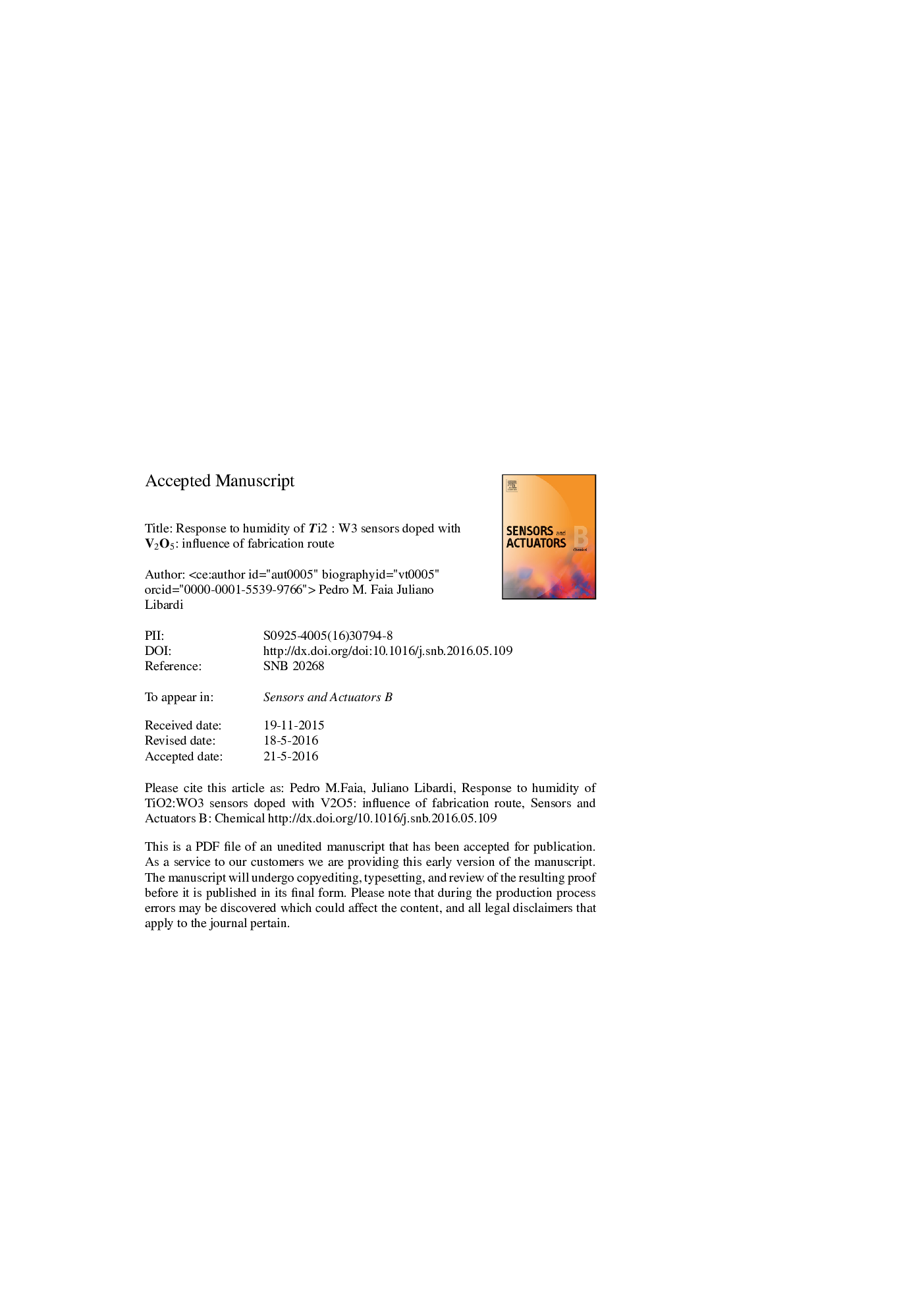| Article ID | Journal | Published Year | Pages | File Type |
|---|---|---|---|---|
| 7143289 | Sensors and Actuators B: Chemical | 2016 | 44 Pages |
Abstract
In a previous paper, the influence of different contents of V2O5, 3, 5 and 7% in weight in sensors based on the TiO2:WO3 pair sintered at 700 °C was investigated. Since V2O5 as a low melting point (â¼690 °C), authors decided to alter the fabrication procedure: mechanical alloying was applied to the as received starting powders, allowing the reduction of the sintering temperature to 500 °C, and sensors based on the TiO2:WO3 pair, with 3, 5 and 7% in weight content of V2O5, were prepared. The present paper describes the influence that the change of fabrication steps had on the new sensors response to moisture: some of the sensors present a conduction type transition, and were investigated concerning microstructural characterization and their electrical response was measured in the range 400 Hz-40 MHz, at the operating temperature of 20 °C and on the relative humidity (RH) range between 10 and 100%. Besides, a model of the sensors electrical behaviour is depicted, which permits to better comprehend the phenomena's present in our sensors that contribute to the overall electrical response.
Related Topics
Physical Sciences and Engineering
Chemistry
Analytical Chemistry
Authors
Pedro M. Faia, Juliano Libardi,
